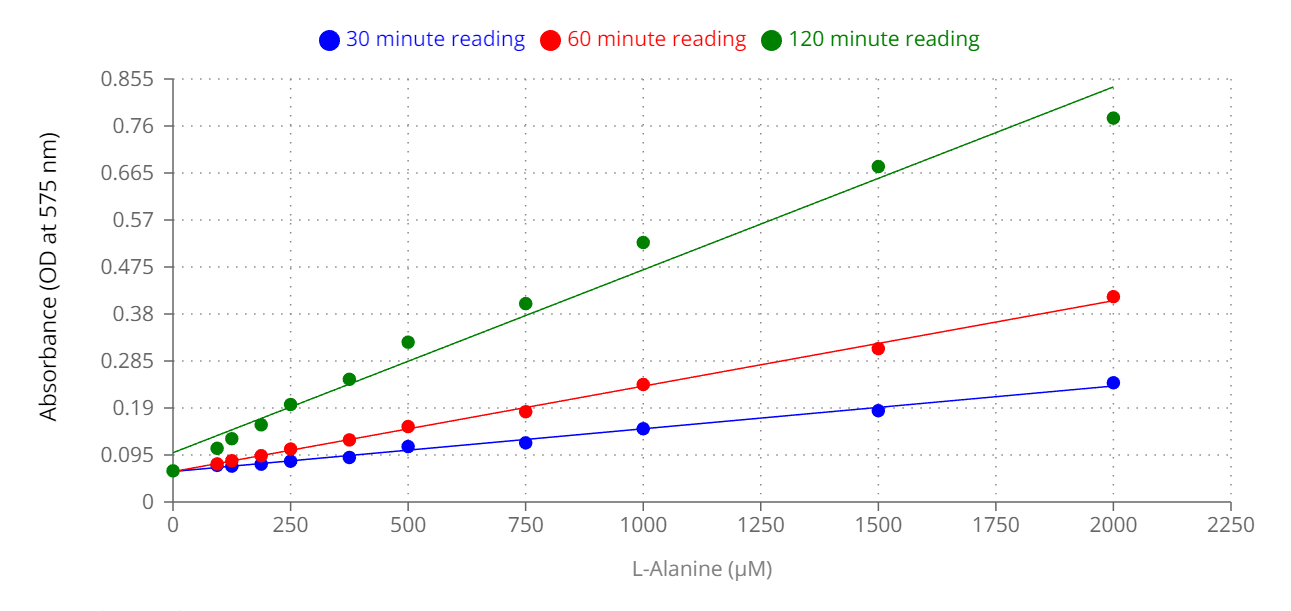Amplite® Colorimetric L-Alanine Assay Kit
L-alanine (L-Ala) plays a crucial role as a building block of important proteins. L-alanine is mostly synthesized by the muscle cells from lactic acid and absorbed into blood via the liver. It is converted into pyruvate by glutamic-pyruvic transaminase to enter the metabolic mainstream. L-Ala is critical for the production of glucose and hence blood sugar management, and plays an important role on the immune system and prevention of kidney stones. Insufficiency of L-alanine is usually a sign of poor nutrition, low protein diet, as well as stress. AAT Bioquest's Amplite® Colorimetric L-Alanine Assay Kit offers a sensitive colorimetric assay for quantifying L-alanine in biological samples. It utilizes an enzyme coupled reaction that releases hydrogen peroxide, which can be detected by Quest Fluor™ L-Alanine Sensor in an absorbance microplate reader at 575 nm.


| Catalog | Size | Price | Quantity |
|---|---|---|---|
| 13826 | 200 Tests | Price |
Storage, safety and handling
| H-phrase | H303, H313, H333 |
| Hazard symbol | XN |
| Intended use | Research Use Only (RUO) |
| R-phrase | R20, R21, R22 |
| UNSPSC | 12352200 |
Instrument settings
| Absorbance microplate reader | |
| Absorbance | 575 nm |
| Recommended plate | Clear bottom |
Documents
Contact us
| Telephone | |
| Fax | |
| sales@aatbio.com | |
| International | See distributors |
| Bulk request | Inquire |
| Custom size | Inquire |
| Technical Support | Contact us |
| Request quotation | Request |
| Purchase order | Send to sales@aatbio.com |
| Shipping | Standard overnight for United States, inquire for international |
Page updated on January 4, 2026
